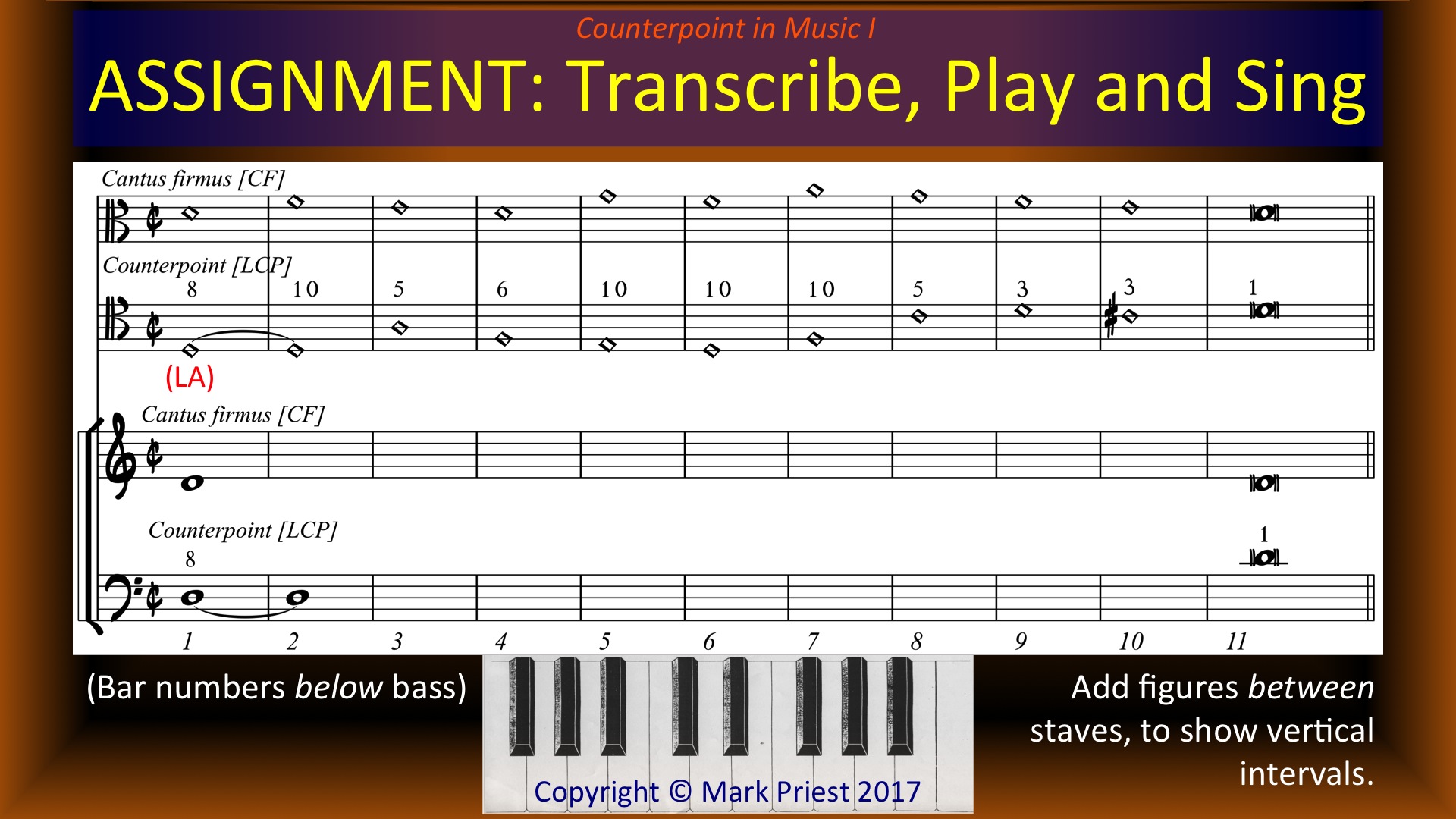FIRST SPECIES IN TWO PARTS: LOWER COUNTERPOINT (LCP) –
Counterpoint as Bass, Finding and Fixing Errors
In *Gradus ad Parnassum*, an important 18th century treatise on counterpoint by **Johann Joseph Fux**, the student in the dialogue submits an example having errors in the counterpoint line below the cantus firmus. Can you spot the student’s mistakes? [mus]
We learned that 2-part, first species counterpoint must always begin with a perfect interval between the two voices. That P5 between G and D in the first bar, however, throws the example into a different mode – from D Dorian to G Mixolydian. [mus] Such “modal wandering” is not allowed in the initial bar. [...]
WATCH VIDEO:
https://youtu.be/FWj6ermkIB4
LIBRARY REFERENCES, in Alphabetical Order
Fux, Johann Joseph, *Gradus ad Parnassum*. Reprint of original, in Latin. A Public Domain work. Vienna, 1725.
Link: http://imslp.org/wiki/Gradus_ad_Parnassum_(Fux,_Johann_Joseph)
Schubert, Peter. *Modal Counterpoint*.
Salzer, Felix, and Carl Schachter: *Counterpoint in Composition*. McGraw-Hill: New York, 1969.
IMAGE CREDITS, details from *Gradus ad Parnassum*, Johann Joseph Fux. Reprint of original, in Latin. **Public Domain**. Vienna, 1725.
Frontispiece.
Title Page.
Cantus Firmus with Lower Counterpoint, p. 48, including student errors.
**Playlist** on *How to Make Your Own Cantus Firmus* (4 videos): https://www.youtube.com/playlist?list=PLr9RYCj11MSx1-XdfulLNQX0uZLC-hGvR
Watch this **Tutorial** on **C-clefs** and other useful info:
https://youtu.be/XfVuTtBjcYM
Then for practice, you may copy or transcribe the two C-clef lines shown below to Treble and Bass staff, a.k.a. "Grand Staff."

Follow, Upvote, Comment, Resteem, Share!
 hiveblocks
hiveblocks